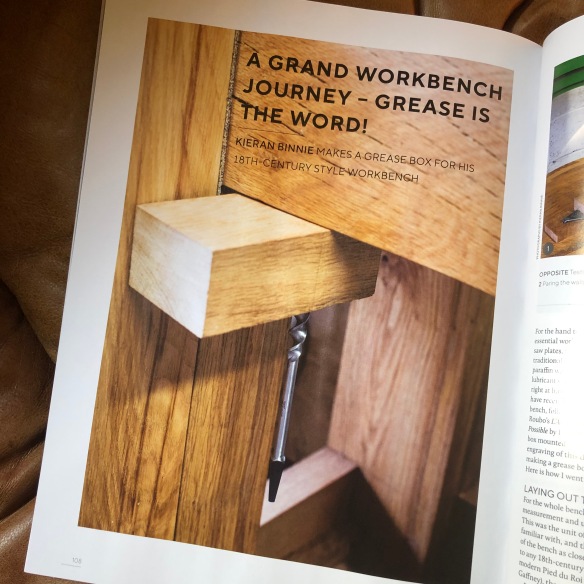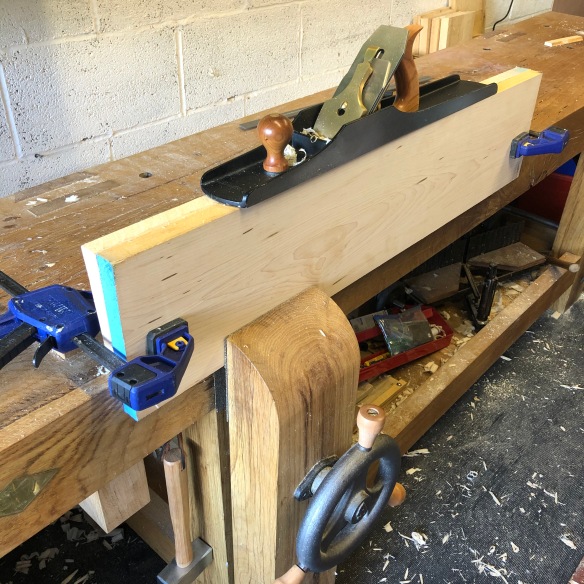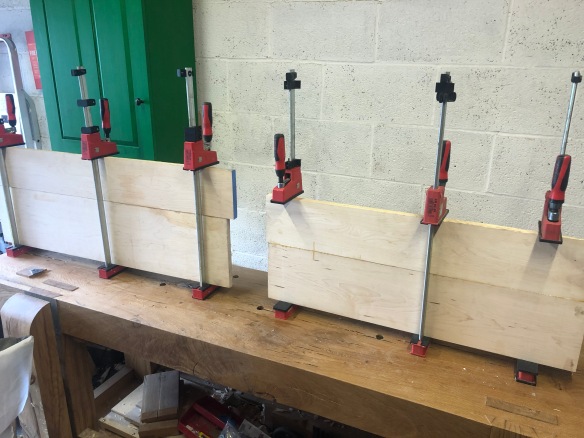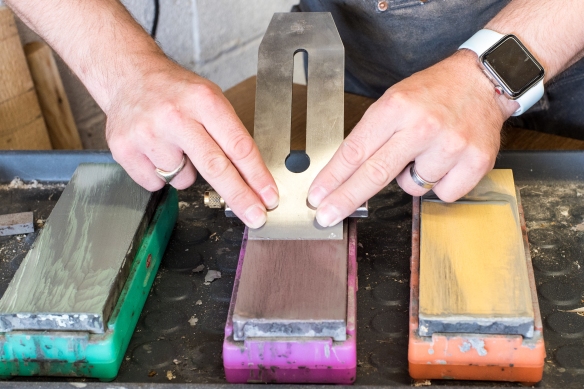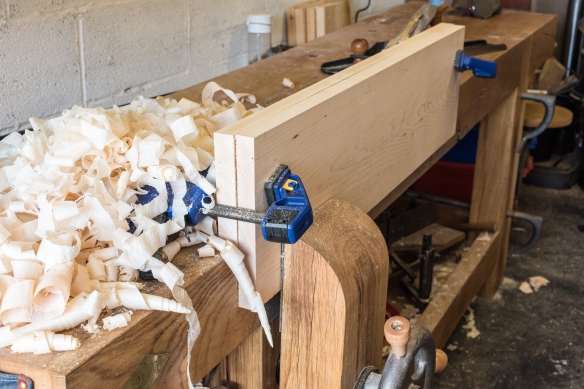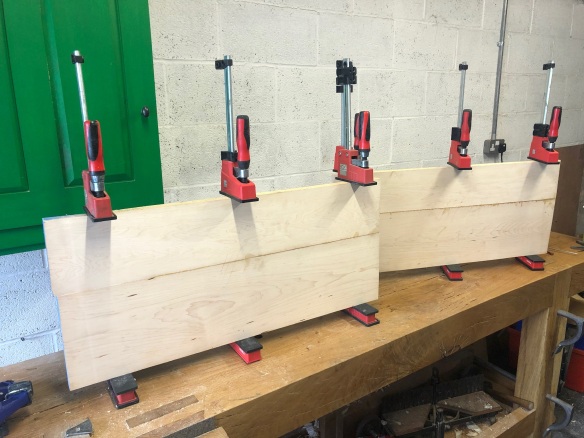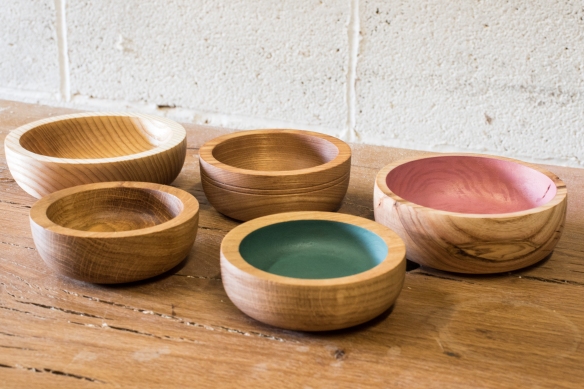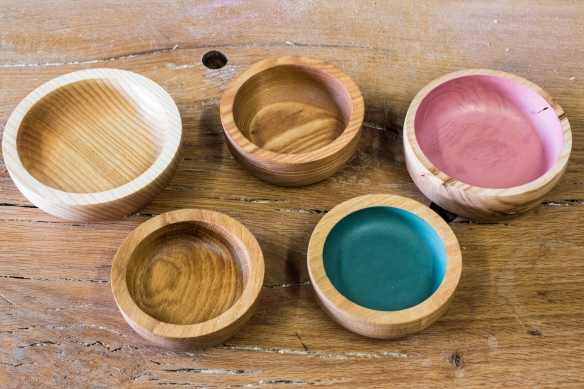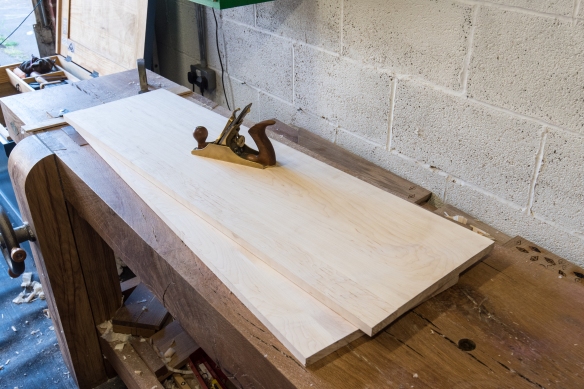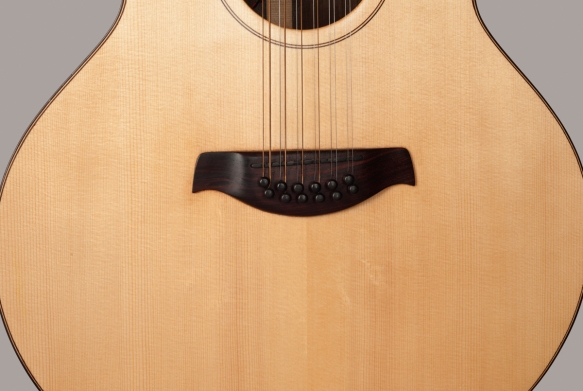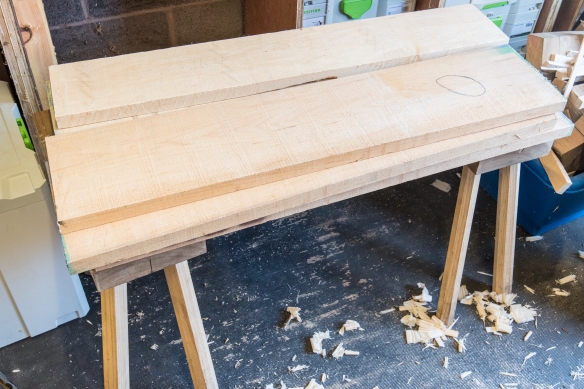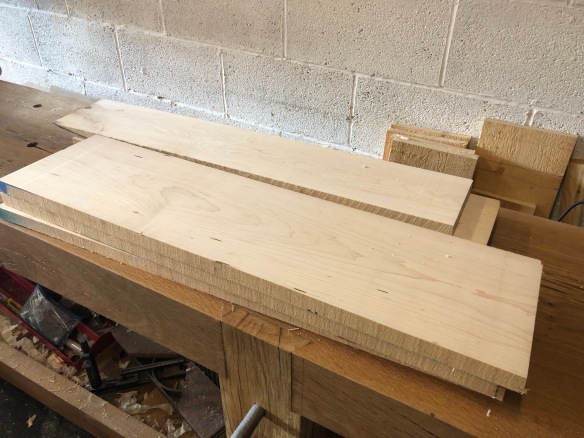… you already know the answer.
When I cleaned up the first panel for the boarded bookcase (which I’d glued up back in September 2018) I found a joint that was structurally sound but the glue-line for which was far mor visible than I would have liked. This panel was for one of the bookcase sides, and so would be one of the most pominent components of the finished piece.
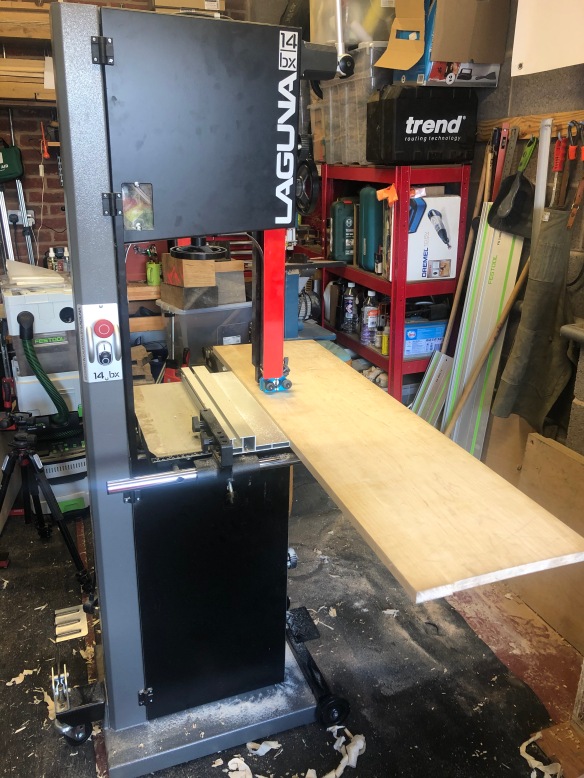
The bandsaw made removing the waste a precise and predictable exercise
What followed was hours of agonising:
- Could I orientate the panel so that the glue line was in a less obtrusive place? Yes, but I’d still know it was there.
- Would you even notice it in the context of the finished piece? Possibly not, but I’d still know it was there.
- Would knowing it was there matter? The glue-line wasn’t going to have an impact on the longevity of the piece, but it sure was going to annoy me everytime I looked at the bookcase. Which will be every day, given that it is going to stand next to my staked desk.
- Could I paint the exterior of the bookcase? That was definitely an option, but my original plan was to finish the bookcase with blonde shellac and Osmo to match the desk. And what happens if I redecorate my music room? Would I have to strip and re-paint the bookcase? Hiding the glue-line under milk paint feels an awful lot like cheating, and even if I can’t see it, it will still annoy me (see above).
In the end, I did what I should have done when I first cleaned up the panel and decided I wasn’t happy with the joint – I cut it down and re-jointed. Which all in all took a lot less time than the several weeks of obsessing over whether I could live with the original joint or not. If you have to ask the question, chances are you already know the answer.
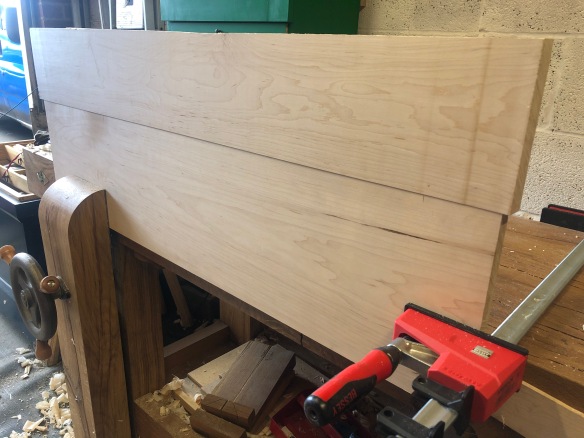
Preparing the new joint. The top-most component is over width, which makes flushing up after glue-up easier.
Having surfaced the panel and planed it to dimension, I wanted to ensure that breaking the panel down and preparing a more satisfactory joint did not result in any damage being inflicted on the finish surfaces. To remove the current joint, I ripped the panel on the bandsaw, cutting just to the waste side of the glue line. This ensured that I would preserve as much of the existing panel as possible. I then jointed both edges simultaneously with the No8 plane set to a fine cut, making sure that the entirety of the old glue was removed before test fitting the joint. The new piece being scabbed on was also left overwidth so that I didn’t have to worry about getting the faces of the panel coplanar during glue up. Once I was happy with the new joint I glued it using Titebond liquid hide glue, situating the new component so that the extra width created an overhang on both sides of the existing panel.

Flattening the new section
Once the glue had cured, I flushed up the new piece using my No5 hand plane, with the heel of the plane on the existing panel to act as a reference surface. Once the panel was just a hair off final thickness I moved to the smoothing plane to remove any tool marks and tearout. The end result is a much more acceptable glue line, and the return of my ability to sleep at night (this week at least).
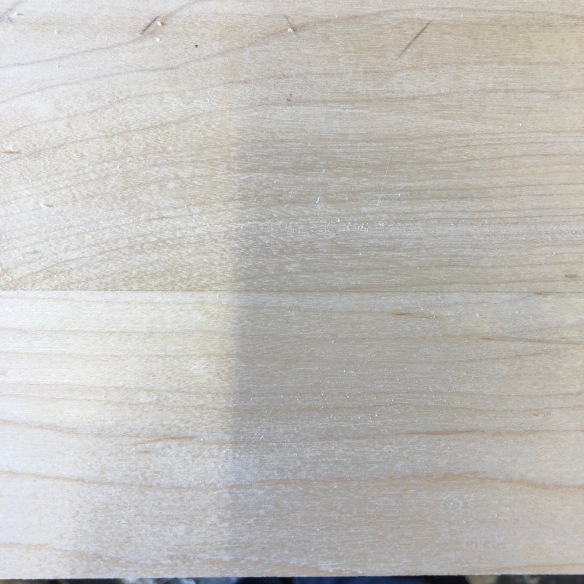
Maple is unforgiving of glue lines, but this one I can ive with
Was I being neurotic over what was at the end of the day a relatively minor imperfection? Quite possibly, but I find that if a project starts off on the wrong foot it will haunt you for the rest of the build (and possibly beyond). And when it is something I know I can get right, I feel compelled to correcting the error before moving on with the project. For what was only a few hours work, I’m glad that I tackled this issue, and can now progress with the rest of the build with a clear mind. Next up is flattening the shelf panels and then cutting some joinery.

